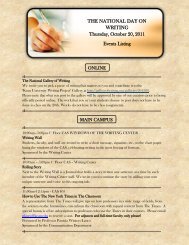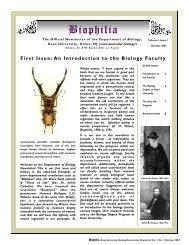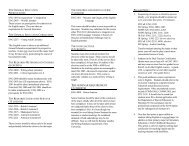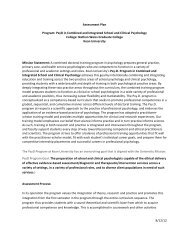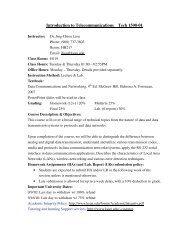GeorGe SeGal - Kean University
GeorGe SeGal - Kean University
GeorGe SeGal - Kean University
You also want an ePaper? Increase the reach of your titles
YUMPU automatically turns print PDFs into web optimized ePapers that Google loves.
Macbeth. LaMonte Young was tootling a saxophone on top of a haystack and<br />
an army armed with twigs from the woods, advanced against cars. Originally,<br />
Kaprow wanted to be riding a 20-ton bulldozer, I refused to get it for him…In<br />
those years it was wide open to all possibilities. We were convinced we were<br />
forging a new language as good as if not better than Cubism. 1<br />
Happenings, in their preference for the mundane as opposed to the Abstract Expressionist<br />
sublime, lead directly to Pop Art. roy Lichtenstein, also known to Segal, was one more artist<br />
teaching at Douglass; claes oldenburg was presenting his Happenings in Manhattan. And<br />
since Segal was incorporating fragments of the Pop environment, he was often grouped with<br />
Lichtenstein, oldenburg, Jim Dine, and even Andy Warhol. It didn’t seem to matter that<br />
his version of the mundane was the mundane/sublime. From the start, Segal’s art showed<br />
sympathy, elicited empathy, and conveyed complex emotions. there is, of course, a delicious<br />
ambiguity. Are his personages frozen in anxiety or frozen in thought?<br />
Segal is generally acknowledged as a leading artist, far beyond the Pop Art packaging that<br />
catapulted him to early fame. nevertheless there are themes that need to be unraveled, depths<br />
that need to be grasped. It is not that his work bears no relationship to Pop—his chunks of diners<br />
and gas stations still startle—but that the emotions are so different—thoughtful, mournful, critical.<br />
there are formal issues too, beyond his use of abstract painting’s negative space in sculpture<br />
and his depedestalization of three-dimensional forms. color in his work has not yet been fully<br />
examined, nor has his use of photography late in his career. And there are issues of taxonomy.<br />
In terms of the later, I will concentrate here on what I call the portrait paradox.<br />
to begin with, the two wall pieces, the free-standing sculpture and the works on paper in the<br />
exhibition at <strong>Kean</strong> university suggest the need for a reexamination of the role of the model in<br />
Segal’s work; the specificity of Segal’s subjects is often dismissed, since it is commonly thought—<br />
and in fact was stated by the artist himself—that the plaster and, later, bronze figures were types<br />
rather than portraits, just as their equally important settings were typical diners, garages, and so<br />
forth, and not intended as specific ones. But although Segal’s personages are mostly workers<br />
and people one might pass in the streets, portraiture is just beneath the surface, as it were.<br />
until he began employing a two-part investing process in the 1970s, he used the shells composed<br />
of plaster-soaked bandages in themselves, so that the model’s negative form, warts and all, was<br />
unseen inside the sculpture.<br />
He reported that since he had not yet discovered that a lubricant was necessary, his first<br />
foray into body-casting (Man Sitting at a Table, 1961) still contains some of his body hairs in<br />
its interior, since they were stripped away quite painfully when the hardened cast was pulled off.<br />
1. John Perreault, “George Segal: Plastered People,” The Village Voice, october 24, 1974<br />
3






